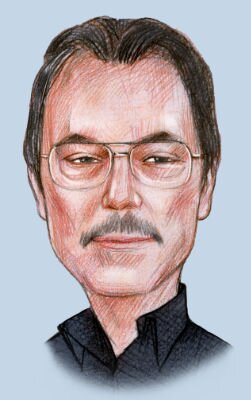
If he had only waited a few years (and, I guess, not died) he could have blamed it on AI.
There has been a whole lot of news in the last week. So there was not the coverage there otherwise might have been about the discovery of proof that the late Pope Francis was lying through his teeth when he announced four years ago next week that the world’s bishops hated the Latin Mass.
The falsehood came with the release of “Traditiones Custodes,” the pontiff-no-more’s effective ban on the solemn rite that had been revered in the Roman Catholic Church for a thousand years.
””[T]he Congregation for the Doctrine of the Faith carried out a detailed consultation of the bishops in 2020. The results have been carefully considered in the light of experience that has matured during these years,” wrote Francis.
In so doing, he contradicted his two predecessors, Pope St. John Paul II and Pope Benedict XVI, both of whom found value in the ancient rite and even encouraged its use. The former nightclub bouncer Francis, though, had other ideas. He hated Latin. He hated, apparently, Catholic morality, too. (Making him just the right pope for the likes of Joe Biden, who championed mortal sin at every opportunity.)
To the thanks of many, Benedict had released the apostolic letter “Summorun Pontificum” in 2007. It gave the Traditional Latin Mass equal standing with the modern Mass that was cooked up after Vatican II. “What earlier generations held as sacred, remains sacred and great for us too, and it cannot be all of a sudden entirely forbidden or even considered harmful, he wrote. “It behooves all of us to preserve the riches which have developed in the Church’s faith and prayer, and to give them their proper place.”
Nine years earlier, John Paul II had written, “To all those Catholic faithful who feel attached to some previous liturgical and disciplinary forms of the Latin tradition, I wish to manifest my will to facilitate their ecclesial communion by means of the necessary measures to guarantee respect for their rightful aspirations. In this matter I ask for the support of the bishops and of all those engaged in the pastoral ministry in the church.”
During his shameful 12-year reign, the kindest thing I heard said about Francis was expressed many times by a variety of parish priests with whom I spoke: “The Church has survived bad popes in the past.” Francis’s death in April, the day after Easter, was the answer to many prayers. Asked their reaction to the death, people who worked in the Vatican said they felt they had been freed. He was not loved by those who worked for him. He was a jerk.
Francis was always known to be a serial dissembler. As noted in this space four years ago, “Pope Francis tried to kill the Traditional Latin Mass, as he has essentially killed the Church in China (by agreeing to let the Chinese Communist Party appoint the bishops) and the Knights of Malta, and is apparently hard at work helping kill the Church in Germany. He is intensely political, while his theology is all but nonexistent. When Francis published a series of pamphlets on theology, the Vatican announced that his predecessor, Benedict XVI, had in full voice endorsed the booklets. It turned out that Benedict instead had said he hadn’t read the little tracts, perhaps as an act of mercy, and had no intention of doing so anytime soon. Benedict’s letter to that effect was actually doctored in a photograph released by Francis’s Vatican. (Benedict is a theologian and his deep and meaty publications are many.)” There still is suspicion, and likely always will be, that Benedict was forced to resign by malign elements in the Vatican.
Said Francis when he banned the Traditional Latin Mass, “I instructed the Congregation for the Doctrine of the Faith to circulate a questionnaire to the Bishops regarding the implementation of the Motu proprio Summorum Pontificum. The responses reveal a situation that preoccupies and saddens me, and persuades me of the need to intervene.”
He was lying. Or else saying without saying it that the Latin Mass had become so popular that he had decided to crush it. The actual results of the survey were never made public. Then, eight days ago, they were leaked.
Diane Montagna is a highly respected reporter on Vatican matters. She stunned the world, or at least the part of it that still cares, by releasing much of the document that Francis had commissioned. “The previously undisclosed text, which forms a crucial part of the official report by the Congregation for the Doctrine of the Faith on its 2020 consultation of bishops concerning Summorum Pontificum, reveals that ‘the majority of bishops who responded to the questionnaire stated that making legislative changes to Summorum Pontificum would cause more harm than good.’
“The overall assessment directly contradicts, therefore, the stated rationale for imposing Traditionis Custodes and raises serious questions about its credibility,” she wrote.
“He told the bishops that he was ‘constrained’ by their ‘requests’ to revoke not only Summorum Pontificum but ‘all the norms, instructions, permissions and customs’ that preceded his new decree.
“However, what the Vatican’s overall assessment reveals is that the ‘gaps’, ‘divergences’, and ‘disagreements’ stem more from a level of nescience, prejudice and resistance of a minority of bishops to Summorum Pontificum than from any problems originating from adherents to the traditional Roman liturgy.”
It should be noted that few if any were surprised by Montagna’s disclosures. To continue to quote from her lengthy article:
“Pope Francis stated in Traditionis Custodes that he ‘considered the wishes expressed by the episcopate and heard the opinion of the Congregation for the Doctrine of the Faith.’ The overall assessment is precisely the part of the report that synthesizes and interprets the survey results, offering an evaluative conclusion drawn from the evidence.” Considered, perhaps, but then wholly disregarded.
Almost immediately Monsignor Nicola Bux, a great and highly respected liturgist, published his book on the subject. In an interview, Msgr. Bux said many smelled a rat when Francis issued his decree. “The first to be astonished was Pope Benedict. . . . But for many others, too, it was surprising that the bishops of the world should take such a negative stance toward an act - Summorum Pontificum - that had indeed restored liturgical peace, hoped for by Benedict XVI himself, and at the same time had done justice to a precious and millenary heritage.”
Francis’s message to me was that I was no longer welcome in his Church. Many priests I know, as well as long-time Catholic faithful, felt much the same.
It was the second time in my life I had felt that though I had not changed, the denomination of which I was a member had abandoned me and itself. I was raised an Episcopalian, with the 1928 Book of Common Prayer, which even devout Latin Catholic William F. Buckley Jr. described as the most beautiful book ever written in the English language. In the late 1960s and the 1970s, that revered volume was cast aside. Flaky revisions to the Bible were also made.
At the same time, the Episcopal Church became more a political body than a religious one. It seems to have been a poor choice. In the 1960s, there were 3.4 million Episcopalians in the United States. “Today, that number has declined further and may be below 300,000,” reported Anglican Watch in 2023. In 2016, the Episcopal Church was essentially tossed out of the Anglican Communion for three years, for taking political positions at odds with Anglican teaching.
Francis’s Roman Catholic Church seemed eager to follow the Episcopalians into oblivion.
If you’d like to spend the rest of your life in one argument, suggest that the decline in attendance at Mass since the adoption of Vatican II in 1965 has been due to that sweeping change in the Church.
But wherever you stand on the issue, Mass attendance has been declining. LifeSiteNews noted in 2018 that “The Catholic Church is seeing its biggest decline in Mass attendance in the U.S. in decades that started between the papacies of Pope Benedict XVI and Pope Francis, a new Gallup poll says.
‘From 2014 to 2017, an average of 39% of Catholics reported attending church in the past seven days. This is down from an average of 45% from 2005 to 2008 and represents a steep decline from 75% in 1955,’ the poll found.
“Francis became Pope in 2013.”
I cannot know whether other people stopped attending Mass due to Francis, but I certainly did. I was unwavering in my Mass attendance until the publication of his Latin ban. I have not attended Mass since, instead taking in online celebrations of the Mass — in Latin. I continue to contribute to my parish, but in ways that make sure none of it is sent to the diocese or to the apparently illiterate U.S. Conference of Catholic Bishops or to the Vatican.
What’s more, before Francis banned it, young people had embraced the Traditional Latin Mass in high numbers.
“A recent online survey of 1779 adults from 39 states found that the ‘Traditional Latin Mass is experiencing a high volume of participation and interest in the 18-39 demographic,’” reported the Priestly Fraternity of St. Peter, the one group in the Church still allowed to regularly say Latin Mass, in 2020. “The survey showed an astounding 98% weekly Mass attendance in the 18-39 age group.” This while the rest of the Church was on the decline.
So Francis did all he could to suppress it.
If you are not Roman Catholic you might wonder what the fuss is about. If you attended a Latin Mass and the “Novus Ordo,” the relatively irreverent vernacular liturgy that is now all that’s allowed, you would quickly realize the difference.
“Modern Mass is conducted as if silence is the enemy, that there should never be a time when there isn’t something noisy going on. Active participation is so encouraged that it sometimes seems as if there isn’t an opportunity to contemplate the mysteries of faith. Even during communion itself, the most fundamental of the seven sacraments, congregants are expected to sing rather than think about how profound it all is,” I wrote in 2015.
“The Latin Mass is quiet, often silent or close to it. The Church teaches (and I think it stands to reason) that prayer must include listening, to hear what God tells us. This is easier to do, especially for easily distracted persons such as myself, when there’s not sensory overload. When there is music with the traditional Mass, it is typically in the form of chants that encourage reflection rather than replace it.”
During the Traditional Latin Mass, the priest faces the altar, not the congregation, in recognition that it is about God, not us. It is solemn and comforting. It stays with you.
Now Francis has gone to his judgment and (we are obligated to pray) his eternal reward. He is in my Rosary intentions daily (though I do not know the effect, because I pray the Rosary in Latin).
Within minutes of the selection of Pope Leo XIV, there was hopeful talk that he would suppress Francis’s terrible Traditionis custodes and restore the Latin Mass. That remains to be seen, but there is hope.
Who will Leo follow? A thousand years of Church tradition, or a demonstrable liar?

Dennis E. Powell is crackpot-at-large at Open for Business. Powell was a reporter in New York and elsewhere before moving to Ohio, where he has (mostly) recovered. You can reach him at dep@drippingwithirony.com.
You need to be logged in if you wish to comment on this article. Sign in or sign up here.
Start the Conversation